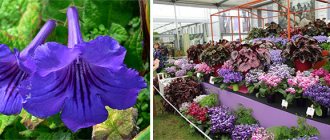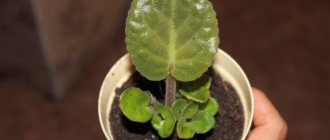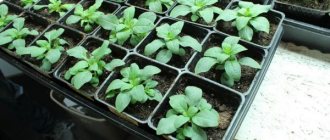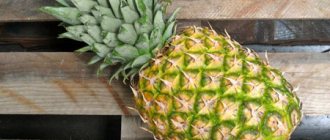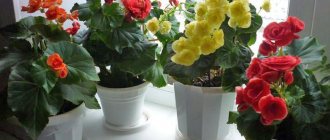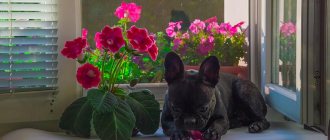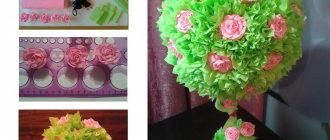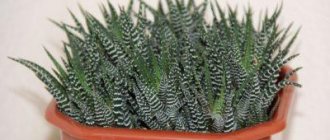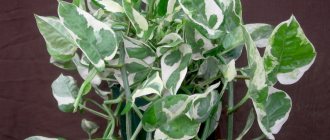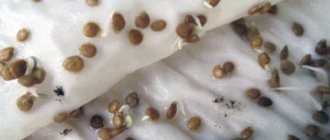We don’t always allow ourselves trips to the bosom of nature, but a small florarium with succulents, even in a small apartment, is not a problem. Installed florarium - and a corner of nature is always near you. The house becomes more beautiful and comfortable.
Anyone can purchase such a small corner of nature behind glass. Online stores offer florariums for every taste: with cacti, reindeer moss, natural shells, bark, etc. But the prices for such mini-gardens are steep. The cheapest ones cost about several thousand rubles. But there is an alternative. It’s easy to make such a natural corner yourself.
In our article we will tell you not only what types of florariums there are, but also give instructions for making them. And you decide whether to buy a garden in a bottle or save money and create a small masterpiece yourself.
Master class on filling a florarium from a florist - Alexandra Matyukha
Recently, it has become very popular to plant succulents and cacti in glass vases - florariums. Nowadays, you can easily purchase a variety of geometric containers in online stores, and even florariums with ready-made compositions. There is also a more economical option - find a suitable glass vessel at home and fill it according to your taste and desire. Succulents grow well in florariums, this is due to the protection of the plant from drafts and temperature changes.
You can get acquainted with Alexander’s amazing works using this link in his VK group. There are geometric and hanging florariums of different sizes and shapes.
Especially for our readers, we have prepared a master class from Alexander Matyukha. Alexander is a teacher of botany and part-time creator of beautiful florariums. It is a very labor-intensive process to make a whole work of art out of glass and alloys! Alexander has his own workshop, where he makes and fills glass vases. He kindly shared with us the secrets of filling florariums at home.
And so, for your own purposes, you can use a purchased vase, or find something suitable at home, in size and shape, and read about what to do next in our article:
- Master class, step-by-step instructions with photos:
- – What do we need to fill the florarium?
- – Which substrate is suitable?
- – How to properly plant a plant in a glass vase?
- – How can you decorate a florarium?
- – Recommendations for caring for plants in florariums
Succulents in a vase, composition
Preparing the tools
You don’t need any special equipment to create a mini-garden behind glass. To plant plants, you will need the usual tools that are used to plant plants, only much smaller. But if the florarium is very small, purchase tweezers and a pipette for watering. For a bottle florarium you will need a crochet hook and a spoon tied to a stick . Without it, it will be difficult to cope with the task. In addition, you can purchase:
- gloves;
- pebbles or sand that will serve as a drainage layer;
- soil (sand or earth, depending on the type of garden;
- syringe with water for watering plants;
- decorative elements (pebbles, shells, glass and plastic figures.
We take care of the soil
In order not to bother, it is better to buy ready-made soil for succulents. It is sold in any flower shop. Another option is to prepare the soil yourself. The optimal solution is to mix sand and peat in equal proportions. Another way is to mix ordinary soil from the site with sand, calcining it in the oven to protect the florarium from the appearance of mold and fungi.
It is also recommended to place activated carbon at the bottom of the florarium or use drainage in large quantities, since its task is to absorb moisture.
The soil is poured as required for the plants. When buying certain succulents, it is good to consult what soil is suitable for them. To make the mani garden look beautiful, the soil is sprinkled with several layers of multi-colored sand. This will make the florarium seem more beautiful.
Planting succulents (instructions)
When starting to plant succulents, free them from the soil and first of all clean the roots well and shorten them a little. Otherwise, the plants will quickly grow, which is extremely undesirable for a small garden.
- Level the ground. It’s good if there are miniature rakes for this purpose. If not, you will have to do without them.
- Using a small spatula, dig holes. Using a syringe or pipette, pour water into the wells.
- Using tweezers, grab the succulents by the bottom of the stem and place them in the holes.
- Compact the soil slightly. A thick stick or bottle cap will do.
Features of planting some succulents and creating compositions
Some succulents require special attention when planting. So for moss, for example, acidic soils are preferable. Therefore, when preparing the soil, a special substrate for mosses is placed on top. Natural moss in a florarium is quite capable of replacing artificial moss. As for some succulents, they require special attention.
Argyroderma is an undemanding plant. It is easy to transplant and is unpretentious. The flower is called “living stones”, but not because of its unpretentiousness, but because of its strange shape and color, reminiscent of the color of gray stones.
Aptenia is also good because it blooms. Its flowers come in white, pink and lilac. Another advantage is the same attitude towards dry and wet soil. But even here you must not overdo it and do not water the plant too often.
Monantes , both herbaceous and in the form of a shrub, is more capricious. Although it can tolerate temperature changes, high humidity is not for it.
Piaranthus in the center of the entire composition and not place it in direct rays. Thanks to its unusual leaves and stems, as well as beautiful flowers, it looks extremely attractive.
Before creating your composition, remember a few rules:
- When creating a composition to be viewed from all sides, the tallest plants are planted in the center, and the shortest ones along the edges.
- When viewing the garden from one side, place the tallest succulents against the back wall.
- It is advisable to make small compositions from three plants - one tall and two short.
- It is better to place a flower in the center; the task of the rest of the plants is to highlight its beauty.
Master class, step-by-step instructions with photos:
– What do we need to fill the florarium?
– To fill the florarium you will need plants, substrate and drainage. Read about which succulents are best. Usually succulents or, conversely, moisture-loving plants are planted. For the latter, florariums with a lid are more suitable, inside which optimal air humidity will be constantly maintained. It is also worth considering that such plants need a larger container than succulents, and the substrate must be sufficiently nutritious.
Florariums of various sizes and volumes are suitable for succulents, since they grow quite slowly and thrive on poor substrates - sand and gravel.
Due to their unpretentiousness, succulents are more popular, so using their example it is worth talking about planting plants in a florarium.
An extremely important component of the florarium is drainage . It sounds great for sealed containers, but the problem of water stagnation must be solved. This can be done using various hygroscopic materials; fine expanded clay and hydrogel can be used. It is also necessary to use activated carbon, which is used in filter columns and aquarium filters. Coal for a long time prevents the walls of the florarium from “blooming” - the development of algae.
– Which substrate is suitable?
– As already mentioned, gravel and sand-gravel culture are excellent for growing succulents. Both sand and gravel can be purchased in a store, or collected with your own hands on the seashore (especially when it is nearby)
The collected material must be processed ; it is best to heat it in an old unnecessary frying pan or baking sheet in the oven. Purchased materials can be simply washed.
Purchased materials can be painted or unpainted, quarried or otherwise mined - to suit every taste.
Substrate for filling the florarium - sand, drainage, hydrogel, activated carbon
Colored pebbles, pebbles and gravel
Shells for decoration
– What plants are suitable for a florarium?
– Small cacti, haworthias, echeverias, lithops, sedums and crassulas get along well in glass.
– How to properly plant a plant in a glass vase?
– Planting is carried out in several stages:
- First you need to thoroughly wipe and polish the vase itself using a glass cleaner. If we are talking about a florarium made using the Tiffany technique, then take care of the platinum at the seams, try not to chip or scratch it.
Advice: work with latex gloves, otherwise when you wipe one edge, you will definitely leave marks on the next one.
- Before planting, prepare everything you need: remove the plants from the technical pots and rinse the roots in warm water , select the substrate in accordance with your plan - everything should be at hand.
- First, you need to pour a sand cushion on the bottom (so that large gravel and expanded clay do not leave deep scratches on the bottom edge). Place expanded clay in the center, add hydrogel and activated carbon. Line the side edges with gravel. Place the plants in the resulting “bowl” and fill the gaps with gravel.
– How can you decorate a florarium?
“Everyone has different tastes, I prefer natural, natural materials in natural colors and shades. Sometimes customers contact me who want to decorate a vase in a certain color scheme. Such experiments also turn out to be very interesting.”
Florarium concept
A florarium, or, otherwise, a “garden in a bottle” is an independent ecosystem that exists in a terrarium or a transparent plastic container.
Florariums come in the most incredible geometric shapes and sizes ; mini florariums are very popular, as well as an incredible closed system - a closed florarium that does not require human intervention at all.
Selecting flowers for a florarium will not be difficult. The main thing is to choose plants with similar living conditions . In an apartment, such an eco-terrarium with plants can be a breath of fresh air, literally and figuratively.
Popular compositions
Decorating a garden in glass is real creativity at its best. Currently, both a mixture of styles and separate categories of florariums are popular. Let's look at the main ones.
Desert theme. A composition of small cacti will decorate a small windowsill or office interior. The style basis here is sand, which can be combined with stones and pebbles. They will look beautiful and make you look younger.
Ceramic garden figurines of the smallest sizes are often added to florariums. They look appropriate with the dark greenery of the garden in a bottle and slightly dilute the cold composition.
Types of florariums
The idea of keeping plants in a closed container with transparent walls is not new. This method of growing tropical plants, which were not suitable for the colder climate of England, was practiced by Nathaniel Ward back in the 18th century.
The creation of a closed space was dictated by practical necessity - heat-loving plants simply did not survive in the harsh climate, and it was necessary to experiment with the conditions of detention in order to conduct research activities.
But soon indoor gardens became decorations for fashionable salons and rich houses - having a florarium with an orchid was considered chic.
Today, a florarium is not just a box. There are many different forms of mini cactus gardens. In general they can be divided into:
- They are open
- Closed . A closed ecosystem isolated from the outside world.
Open florariums differ in geometry and size, while closed ones are most often small.
In addition to two types, florariums can be:
- wall, hanging and tabletop;
- with and without backlight;
- florarium with imitation water;
- florarium bonsai;
- very large and very tiny.
Plant selection
Succulents that are suitable for florariums are very diverse both in appearance and in their structure. Their choice depends on the taste and preference of the manufacturer. The recommended list includes such plants.
Cacti. These desert inhabitants look simply wonderful in a closed transparent container along with other plants. Their greenery and thorns begin to play with new colors, and the appearance of the florarium becomes elegant and stylistic. Cacti grow slowly and live well in conditions of infrequent watering, which makes them simply irreplaceable inhabitants of a plant terrarium.
Prickly and smooth, covered with bloom and bright green - all this variety can be embodied in a terrarium for plants. You can include more than just one type of plant in the composition. Allocasia, fetonia, mosses and mini-ferns will go well with succulents.
When selecting compositions, they carefully study not only the decorative characteristics, but also the plant preferences for soil, requirements for lighting, humidity and care: the “neighbors” in the florarium must have all the same parameters.
The main rule when choosing a plant is that it should be dwarf and have a very slow growth rate.
- Ferns: maidenhair, or lady's hair; asplenium; multi-row; pteris;
- trees: ficus microcarpa, myrsina, Japanese maple, pomegranate, etc.;
- tillandsias, now very popular tillandsias from the atmospheric group are used for planting together with succulents, while the remaining species are more suitable for tropical florariums;
- orchids: miniature phalaenopsis, hybrids of phalaenopsis and Kinga dendrobiums, ludisia, paphiopedilum;
- ivy, varieties with small leaves and low growth rate);
- hypocyrta;
- hypoesthes;
- fittonia;
- cryptanthus, or earth star;
- Pilea;
- selaginella;
- soleirolia (for ground cover in large florariums).
Suitable for planting:
- adenium;
- echeveria (echeveria) and its relatives;
- slipway;
- aloe: miniature species, like a. aristata or a. brindle;
- gasteria;
- haworthia;
- living stones, or lithops;
- small cacti: astrophytums, gymnocalyciums, mammillaria, etc.);
- aichrizon (can be formed in the form of a tree);
- Crassula;
- aeonium (small specimens).
We create a florarium with our own hands
There are a lot of options on how to make a florarium yourself, especially since you can even find ready-made drawings with dimensions and step-by-step instructions on the Internet.
But the easiest way is to use ready-made aquariums or other glass containers that originally had a different purpose.
In an aquarium or round vessel
One of the simplest solutions is to set up a florarium in an old aquarium , which you probably have at home or with friends.
You can also purchase a new tank, especially if you want a container with an unusual shape, but a former fish house is also a good place to start.
The advantages of such a florarium:
- Small size (to begin with, you shouldn’t take a container larger than 10 liters).
- It can accommodate not only small plants, but also quite large specimens.
- The dimensions of the container allow you to care for each plant and carry out drip watering with a pipette or syringe.
In a large tall jar (for beginners)
The option with a large glass jar is more profitable than the option with an aquarium (you don’t have to spend money on buying a container). A three-liter jar can be found in any home, and as a test option it is optimal.
Semi-desert succulent in a candy bowl
Old candy vases can be a great solution if you rethink their purpose. They initially have an unusual shape, and a beautiful multi-colored sand base and a small group of succulents will become a bright spot in any interior.
Geometric garden
Vessels with complex geometric shapes have become trendy containers for cacti. Of course, to assemble such a container yourself, you will have to tinker (dimensions, drawings, processing and gluing of parts), but the result will be impressive.
Another option for placing a geometric garden is chemical glassware, the main thing is that its dimensions allow it to be placed inside the plant.
Buy or make: which florarium is better?
To understand whether to buy or make a florarium with your own hands, just look at the prices. However, purchased florariums have their undeniable advantages:
- the plants are perfectly selected;
- there will be no problems with the ecosystem;
- time is saved.
But on the other hand, ready-made florariums are:
- expensive (price starts from 2,500 rubles);
- You won’t always find what you would like to see.
A self-made florarium will, of course, require some time, since you will not only need to find and purchase materials, but also spend time creating the composition and the necessary ecosystem. But you will create the corner you dreamed of by placing in it the components and plants you want. And it will cost 3-4 times cheaper.
A little theory: conditions for keeping succulents
In the article “Succulents: Tips for Beginning Flower Gardeners,” we have already mentioned how extensive the list of home succulents is – it is huge! It includes inhabitants of the desert, representatives of the tropics, and inhabitants of the continental steppes. It is clear that it is simply impossible to provide accurate content data suitable for all species. But there are general principles of care for the group of succulent plants.
- Lighting. The more light the better! But remember: not all varieties like direct sunlight.
- Watering. Twice a month - in summer, once - in winter.
- Priming. The mixture for compositions must contain peat, coarse sand, porous minerals (for example, zeolite) and vermiculite - they will increase breathability and make the soil quite light.
- Drainage. The quantity and quality of drainage is of great importance. The speed of plant growth depends on the thickness of the drainage layer. That is, the more drainage, the slower the succulent grows. This remark especially applies to rosette species.
Mini-garden of succulents: parameters for selecting plants
Before you create a composition yourself, study the basic information about varieties and types. What will the planted plants look like when they are mature? How fast do they grow? Do they require dry wintering? This is what should interest us first of all.
- Origin. It is desirable that all plant elements of the future ensemble be as compatible as possible in terms of climatic indicators. It will be very difficult for an inexperienced gardener to maintain a group of cacti and aeoniums in perfect order - each has its own ecosystem.
- Size and shape. Knowledge of morphological data (structure, shape, growth rate) is our main assistant. For example, plants with a constantly growing rosette cannot be planted close to each other. And, conversely, for varieties that branch with small fragments, dense planting is indicated.
- Color. The principle of color compatibility is a creative component of any process. Here, as they say, “there is no friend according to taste” - everyone has their own vision.
- Decor. Which elements you prefer is also a matter of taste. But when choosing the same decorative sand, be guided by compatibility considerations - not all sand is suitable for succulent species.
Suitable crops
The advantage of a composition behind glass is that you can use not only familiar indoor plants, but also exotic ones! Thanks to the special microclimate, they will take root well in a glass container. You can purchase crops at garden centers, flower shops, replant them from old pots, or take them from neighbors. But you need to think carefully about what to choose, even if you like everything. The sizes of aquariums are not so large. Sometimes they use very tiny containers - test tubes, stacks. Experienced craftsmen even manage to place up to 5 types of plants in them. Decide on the design of the product, think about whether you are ready to spend money on additional equipment to ensure the functioning of the mini-garden, take into account your experience and skills. The ideal DIY florarium for beginners should consist of cacti and succulents, because they require minimal resources. But the experiment with growing orchids in a glass container will most likely end in failure, because they need heating, ventilation, and additional care.
Plants for a floral composition should be slow-growing, low-growing - up to 20 centimeters; you can also take those species that can be trimmed. It is important that all cultures in the aquarium require the same or similar conditions for life, otherwise some will simply die. It is better to have a florist select the plants. There are many nuances that novice gardeners do not know about. Simple examples: selaginella does not tolerate lime in the soil, tropical cacti and epiphytic bromeliads do not get along nearby, the roots of some plants secrete substances that kill their neighbors. To simplify the task, take seedlings of one large family for the first time: Crassulaceae or Agave.
All crops suitable for glass gardens are divided into two groups:
- Succulents and cacti. These desert crops are accustomed to a dry climate. They accumulate water in thick trunks and leaves, so they practically do not need watering. The only negative is that in the kitchen, a florarium with succulents does not always last long due to the humid, warm air. The brightness of the light does not matter to them.
American botanists once conducted an experiment. We dug the succulent out of the ground and hung it from the ceiling. He remained alive for another 6 years! And few people know that cacti can be eaten dried, raw, stewed as a side dish for a meat dish, jam is made from it, and compotes are made from it.
- Moisture-loving crops. They will need more attention, but this option is suitable for people who are not attracted to desert landscapes. There are many flowering seedlings, plants with interesting colorful leaves that allow you to create amazing compositions.
Top 5 best plants for a DIY florarium:
- cacti with succulents. Of the stem species, Ekinopsis, Nonocactus, Rebutia, and Opuntia are ideal. Of the Crassulaceae – Echeviria, Juvenile, “Money Tree”.
- moss and ferns (sphagnum, adiantum, pteris, multirow, asplenium). More often used to complete a composition, they are rarely found independently in florariums.
- Saintpaulia, dwarf species of violets.
- Fittonia. They have large leaves of unusual colors. It is better to plant in open containers.
- crotons.
Did you know that mosses are the first plants found on land? They appeared 400 million years ago after algae. In one form or another, they live on absolutely all continents, even in Antarctica. For reindeer, mosses are the only food they get under the snow. And our ancestors used an unusual culture to build wooden houses as thermal insulation.
The easiest way to plant when creating a composition
The first thing that novice amateurs should pay attention to is the method of planting. The simplest and most reliable option at home can be considered the creation of a living composition based on seedlings, planted by type in separate containers-cups.
The advantages of this technology are obvious:
- The succulent is planted in a pot together with its “native” soil - there is no need to select a mixture that is equally suitable for all components of the future composition.
- When transplanted, the plant is not exposed to stress, which invariably accompanies any flower when the soil is changed.
- By rearranging the cups, you can easily find the appropriate location.
- It’s easier to choose exactly those specimens that are well arranged in color, shape and size.
Glass, ceramics, clay, plastic: choosing a container for the composition
Florarium is a fashionable trend in phytodesign. But according to professionals, it is least suitable for a composition of succulents.
- Air movement inside a glass container is difficult. Poor circulation is the main enemy of succulents. In addition, creating an optimal level of humidity in glass is simply impossible due to the lack of drainage holes. And in this case, not everything is good with the light supply. Sunlight transmitted through thick glass can greatly increase the temperature of a moist substrate. And overheating the root system will lead to the roots simply boiling.
- All of the above applies equally to glass vases. Having a wide opening does not provide any guarantee of long-term life for succulents. But if you still choose glass, control the soil moisture most carefully!
- Plastic plant pot. Quite acceptable material. Moreover, the modern range of products of all shapes, colors and sizes allows you to bring any creative idea to life. The only note: pay attention to the drainage holes in the vase - they should be large enough.
- Ceramics and clay are ideal materials. Beautiful mini-gardens, mini-bouquets of succulent flowers are the easiest to maintain in such decorative containers. Hygroscopic clay and ceramics help maintain optimal humidity and temperature values inside the substrate.
How to care for a florarium
The vessel for the mini-garden has a special shape: it has no holes at the bottom and is open at the top. Therefore, it is always humid and warm inside. Succulents do not need daily watering, only light, not too frequent misting. Even during delivery around the city, nothing will happen to them.
The cost of the composition depends on the size, design, types and number of indoor plants included in its composition. Orders are delivered during business hours on weekdays, as well as on Saturdays and Sundays.
